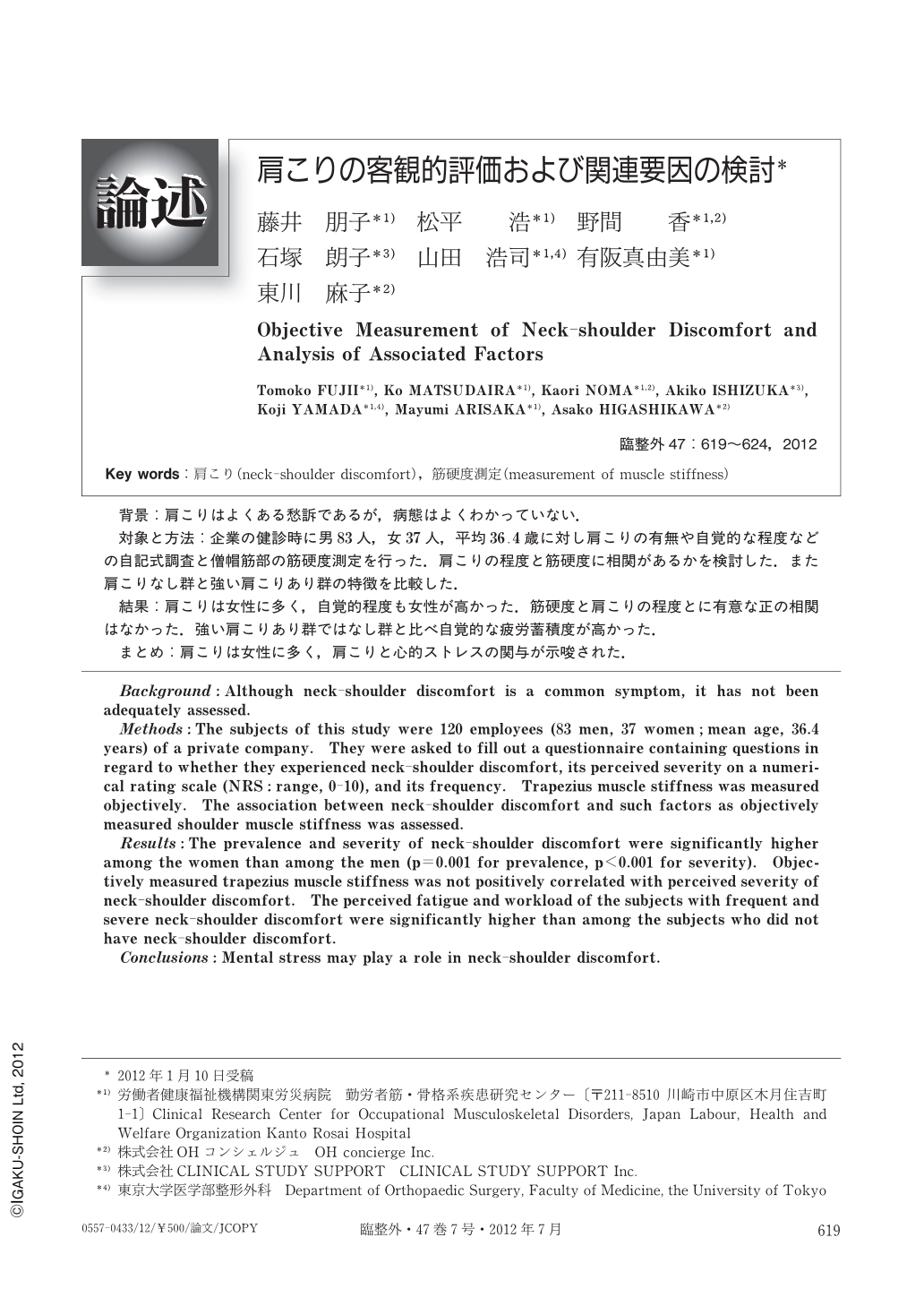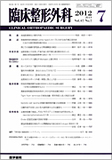Japanese
English
- 有料閲覧
- Abstract 文献概要
- 1ページ目 Look Inside
- 参考文献 Reference
背景:肩こりはよくある愁訴であるが,病態はよくわかっていない.
対象と方法:企業の健診時に男83人,女37人,平均36.4歳に対し肩こりの有無や自覚的な程度などの自記式調査と僧帽筋部の筋硬度測定を行った.肩こりの程度と筋硬度に相関があるかを検討した.また肩こりなし群と強い肩こりあり群の特徴を比較した.
結果:肩こりは女性に多く,自覚的程度も女性が高かった.筋硬度と肩こりの程度とに有意な正の相関はなかった.強い肩こりあり群ではなし群と比べ自覚的な疲労蓄積度が高かった.
まとめ:肩こりは女性に多く,肩こりと心的ストレスの関与が示唆された.
Background:Although neck-shoulder discomfort is a common symptom,it has not been adequately assessed.
Methods:The subjects of this study were 120 employees (83 men, 37 women;mean age, 36.4 years) of a private company. They were asked to fill out a questionnaire containing questions in regard to whether they experienced neck-shoulder discomfort, its perceived severity on a numerical rating scale (NRS:range, 0-10), and its frequency. Trapezius muscle stiffness was measured objectively. The association between neck-shoulder discomfort and such factors as objectively measured shoulder muscle stiffness was assessed.
Results:The prevalence and severity of neck-shoulder discomfort were significantly higher among the women than among the men (p=0.001 for prevalence, p<0.001 for severity). Objectively measured trapezius muscle stiffness was not positively correlated with perceived severity of neck-shoulder discomfort. The perceived fatigue and workload of the subjects with frequent and severe neck-shoulder discomfort were significantly higher than among the subjects who did not have neck-shoulder discomfort.
Conclusions:Mental stress may play a role in neck-shoulder discomfort.

Copyright © 2012, Igaku-Shoin Ltd. All rights reserved.


